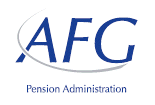
Plan Types...

401(k) Plan
A 401(k) Plan offers participants an election to defer a portion of their salary into the Plan. The funds that are deferred are not included in current income until they are withdrawn from the Plan. In addition to employee deferrals, the Plan may also provide for an employer contribution. This contribution may be in the form of a Matching Contribution or a Discretionary Contribution.
401(k) Safe Harbor Plans
A safe harbor 401(k) plan is a 401(k) plan under which an employer will no longer be required to perform nondiscrimination testing of elective contributions or matching contributions. To land within the safe harbor, a 401(k) plan must meet certain employer contribution requirements and must provide for 100 percent immediate vesting of these contributions.
Under a safe harbor 401(k) plan, an employer can elect to provide either of the following contributions:
403(b) Plans
Section 403(b) plans were established specifically for organizations that are tax-exempt under Code Section 501(c)(3) and for public educational organizations. Institutions eligible for a 403(b) plan include colleges and universities, independent schools, research organizations, teaching hospitals, churches, and charitable organizations. Public teaching institutions, such as state universities and community colleges and K-12 public school systems, can also adopt 403(b) plans.
412(i) Plan
A 412(i) Plan is a retirement plan which allows clients to generate large tax deductible contributions, enjoy steady, tax-free earnings, while minimizing the amount of contributions that must be allocated to the employees. Under the Internal Revenue Code, a Section 412(i) Plan is a defined benefit retirement program that is, as required by law, funded with life insurance and annuity contracts. Section 412(i) allows current contributions to be calculated using the guaranteed cash values and annuity purchase rates of life insurance products. This allows a taxpayer to fund contributions on a tax deductible basis in amounts greater than are typically allowed for other qualified plans.
457 Plan
These plans are offered to public school districts and other governmental employers to sponsor voluntary savings plans for their employees under Section 457 of the Internal Revenue Code. A 457 plan is sponsored by the local employer and in many ways works like a 401(k) plan. These plans are technically "non-qualified deferred-compensation plans." Congress has effectively given 457 Plans the same characteristics as qualified retirement plans, such as 401(k) plans, through a series of changes in federal laws made from 1996 through 2001.
Age-Weighted Profit Sharing Plan
This plan allows for employer discretionary contributions that are allocated to participants based on their age and compensation. This means that the closer a participant is to normal retirement age, the more contribution the participant will receive compared to a younger participant with the same amount of compensation.
Defined Benefit Plan
This is a retirement plan in which benefits are definitely determinable and are usually related to an employee's service and/or pay. This type of pension plan is not an individual account plan, so the employer bears the cost of investment results. The contributions are based on the amount needed at retirement to provide the promised benefit. This plan is more beneficial to older employees because the contributions are determined actuarially, and benefits are guaranteed (subject to the Pension Benefit Guarantee Corporation).
Integrated Profit Sharing Plan
This type of allocation method is integrated with an overall retirement scheme that includes Social Security; this combination is called "permitted disparity". By providing for permitted disparity in it's qualified retirement plan, the employer gets the benefit of it's Social Security Tax payments.
Under an Integrated Profit Sharing Plan compensation is broken out into two parts; the amount above the integration level (excess compensation), and the amount below the integration level (base compensation). Usually the integration level is the Social Security Taxable Wage Base in effect for the applicable year. The employer is permitted to "offset" their contribution to Social Security by applying a lower contribution percentage to the base compensation (i.e.: the base percentage) and a higher contribution percentage to the excess compensation (i.e.: the excess percentage).
Money Purchase Pension Plan
This plan is an individual account plan that must have a fixed contribution formula not based on profits. The contribution formula is typically based on a certain percentage of a participant's compensation.
New Comparability Plan
This plan allows for discretionary contributions to be split among different groups of employees and then allocated among the participants within each group. The plan is then “cross tested” (tested as a defined benefit plan) using the age of each participant in each group, which in many instances provides a higher benefit to participants in one of the selected groups. This plan can be designed to favor the highly compensated employees—depending on the ages of the nonhighly compensated employees.
Nonqualified Benefit Plan
In a nonqualified plan, there are fewer restrictions on provisions such as which employees will participate (may include only key employees). Tax deductions may not be taken until the employee receives the future benefit.
Profit-Sharing Plan
A profit sharing plan is an individual account plan where benefits are dependent upon the contribution, income, expenses, and forfeitures of the plan. The plan is established and maintained by the employer to provide for employee participation in the profits. A profit is not required for an employer to contribute, and the contributions are normally discretionary.
Target Benefit Plan
This type of plan is a cross between a defined benefit plan and a money purchase pension plan. It is similar to a defined benefit plan in that the annual contribution is determined by the amount needed to accumulate a fund sufficient to pay a projected retirement benefit (the target benefit). It is similar to a money purchase pension plan in that a contribution is required each year, and it is placed in an individual participant account where it receives the plan's investment results.